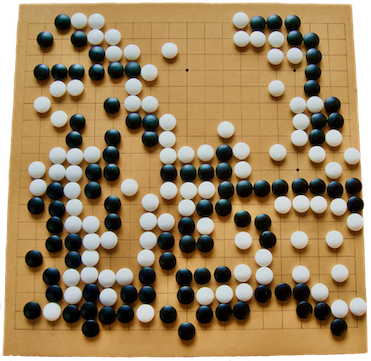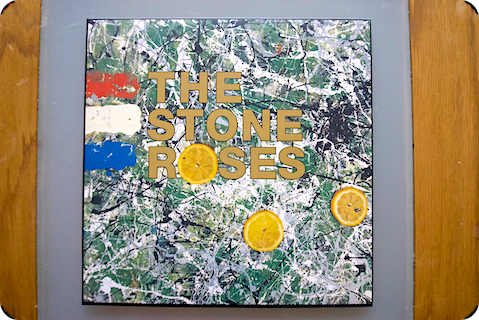Algebra in the Clouds
Nature springs
In Tom Stoppard’s 1993 play Arcadia, Thomasina, a curious 13 year old, asks her tutor Septimus how come it is not possible to ‘unstir’ the jam in her rice pudding. No matter which direction it is stirred it becomes pinker. A metaphysical conversation ensues followed later in the play by a discussion about mathematics and nature, on the seed patterns in a sunflower.
Thomasina: Do we believe nature is written in numbers?
Septimus: We do.
Questions like these have confounded and inspired great minds over the millennia, and perhaps will continue to do so forever. What underpins these phenomena? Is it the laws of physics, evolutionary biology or human perception of pattern recognition? Complexity is generally understood to be an emergent property, a product of the interaction of simpler components. An example sometimes used is that of a 747 jumbo jet destroyed by a hurricane, which is extremely unlikely to be reassembled in a subsequent storm.
There is, however, no agreed standard meaning or scientific definition of complexity. Chaos theory and complexity theory are means by which mathematicians try to understand change over time and which I won’t even attempt to cover here, except for the branch that deals with fractals.
Bottomless wonders spring from simple rules… repeated without end.
Benoit Mandelbrot
The term fractal1 was introduced by Benoit Mandelbrot, a Polish born French mathematician, in 1975. He used it to describe how the rough appearance of nature was the outcome of ordered processes that could be explained using simple rules. I first became aware of fractals in a software application on the Commodore Amiga in the late 1980s. As I recall, it contained a Mandelbrot set and could render artificial landscapes generated using fractal geometry. What made it immediately compelling to me was its aesthetic appeal and my teenage self realised this was more than just a cool screensaver.
The quadratic recurrence equation that describes the Mandelbrot is shown below, where both Z and C are complex numbers.
\[Z_{n+1}= Z_2^n+C\]When represented visually we are shown fascinating shapes and patterns. Zooming in on the image reveals shapes within shapes within shapes. This seemingly ‘simple’ equation creates a self-contained yet infinite universe, which an observer could explore for eternity.
One of the remarkable things that fractals demonstrate is that in a dynamic system, any imperceptible change in the initial state can have a profound effect on final conditions, the proverbial butterfly flapping its wings causing a faraway tornado.
The surrounding game
Go is an ancient Chinese game played on a wooden board with black and white stones originally made from slate and shell. The rules are few and easy to learn, but the game is fiendishly difficult to master. Once again the appeal for me, before I learned to play, was the aesthetic experience. I originally read of the game in an account of Syd Barrett’s life in Cambridge in the 1960s where it had been introduced from Germany, after having made the leap from Asia. When I first saw the game I was immediately hooked.
The rules of go are so elegant, organic and rigorously logical that if intelligent life forms exist elsewhere in the universe they almost certainly play go.
Edward Lasker, German-American chess and Go player
I had the pleasure of participating in the 2014 Confucius Cup in the Teacher’s Club in Dublin that was attended by Fan Hui. He was European champion at the time and went on to win the tournament. An inspiring figure and an incredibly humble character despite his genius, and I was honoured to have a brief conversation with him during the event. The following year he became the first major player to be beaten (5-0) by a computer Go programme called AlphaGo, developed by DeepMind. It was an historic moment for the game and for artificial intelligence.
Of course, when I lost the game I was not happy, but all professionals will lose many games. So I lose, I study the game, and maybe I change my game. I think it’s a good thing for the future.
Fan Hui, Chinese-born French Go player
As the stones are placed one by one on the board (and sometimes removed, or killed) they create a pattern known as a percolated fractal. I randomly chose a game to illustrate this concept from a large game library. It so happens to be one from 1844 that was rediscovered this year (2020). The image below shows the 192 known moves played by Yasuda Shusaku and Kate Ryuwa.
 Go board
Go board
The Go board in the photo is my own inelegant construction, but it’s what I have at home. The interweaving trails of contrasting stones begin with fairly typical opening moves (initial state) and then twist and turn unpredictably as the game moves towards a conclusion (end state).
Try this at home
The following examples of fractals also came from my home. The pine cone has a beautiful arrangement of seed scales around its central stem. It’s an elegant and efficient adaptation for seed protection and dispersal. No wonder pine cones were revered by the ancients as a symbol of fertility.
 Pine cone
Pine cone
The preternatural display of florets in Romanesco broccoli, with its logarithmic spirals and alien appearance, curiously draws the eye in. I ate it after taking the photograph and it was absolutely delicious baked in olive oil with garlic, lemon zest and seasoned with sea salt!
 Romaesco broccoli
Romaesco broccoli
Richard Taylor, the US Physicist, first published his work describing the fractal nature of Jackson Pollock’s paintings in 1999. In his research he has demonstrated how the human visual system reacts the same way to Pollock’s paintings as it does to fractals in nature or those generated by a computer.2
I don’t own a Pollock. They’re considered the worlds most expensive paintings at $500M each, so there’s no problem managing expectations either. What I do have is my son’s vinyl copy of the Stone Roses’ eponymous album.
 The Stone Roses
The Stone Roses
John Squire, former Stone Roses guitarist has clearly been inspired by Pollock. The cover of the band’s volcanic debut album, and much of it’s early visual flair was created by Squire, who later described his art as a ‘rip-off’. The piece is called Bye Bye Badman, also used as a track title.
The lemons on the cover were inspired by a TV documentary of the student riots in Paris in 1968, in which the protestors used them to counteract the effects of tear gas. The green colour used in the background was inspired by Squire’s visit to the Giant’s Causeway in County Antrim in Northern Ireland, a UNESCO World Heritage Site, a prime example of order in the chaos of nature itself, with its strange hexagonal basalt columns.
Squire’s shimmering recursive guitar riffs are a sonic recreation of his drip paintings, evoked in songs like Waterfall and This is the One.
Yeah she looks like a painting,
Jackson Pollock’s No. 5,
Come into the forest and taste the trees,
The sun starts shining, and I’m hard to please…
Going Down by Ian Brown and John Squire
Galaxies and mites
Whether through the inquisitiveness of a child or the insight of a genius, there is something undeniably compelling about our relationship with fractals. In nature or in art we all can detect the signals from the noise, we are surrounded by fractals.
All we need to do is lift up the lids of our eyes.
Algebra applies to the clouds, the radiance of the star benefits the rose–no thinker would dare to say that the perfume of the hawthorn is useless to the constellations. Who could ever calculate the path of a molecule? How do we know that the creations of worlds are not determined by falling grains of sand? Who can understand the reciprocal ebb and flow of the infinitely great and the infinitely small, the echoing of causes in the abyss of being and the avalanches of creation? A mite has value; the small is great, the great is small. All is balanced in necessity; frightening vision for the mind. There are marvelous relations between beings and things, in this inexhaustible whole, from sun to grub, there is no scorn, each needs the other. Light does not carry terrestrial perfumes into the azure depths without knowing what it does with them; night distributes the stellar essence to the sleeping plants. Every bird that flies has the thread of the infinite in its claw. Germination includes the hatching of a meteor and the tap of a swallow’s beak breaking the egg, and it guides the birth of the earthworm, and the advent of Socrates. Where the telescope ends, the microscope begins. Which of the two has a greater view? Choose. A bit of mold is a pleiad of flowers; a nebula is an anthill of stars. The same promiscuity, and still more wonderful, between the things of the intellect and material things. Elements and principles are mingled, combined, espoused, multiplied one by another, to the point that the material world, and the moral world are brought into the same light. Phenomena are perpetually folded back on themselves. In the vast cosmic changes, universal life comes and goes in unknown quantities, rolling everything up in the invisible mystery of the emanations, using everything, losing no dream from any single sleep, sowing a microscopic animal here, crumbling a star there, oscillating and gyrating, making a force of light, and an element of thought, disseminated and indivisible dissolving all, that geometric point, the self; reducing everything to the soul-atom; making everything blossom into God; entangling from the highest to the lowest, all activities in the obscurity of a dizzying mechanism, linking the flight of an insect to the movement of the earth, subordinating–who knows, if only by the identity of the law–the evolutions of the comet in the firmament to the circling of the protozoa in the drop of water. A machine made of mind. Enormous gearing, whose first motor is the gnat, and whose last is the zodiac.
Victor Hugo, Les Misérables

This page was last updated on Sep 09, 2020 22:52
science philosophy nature music go food books writing